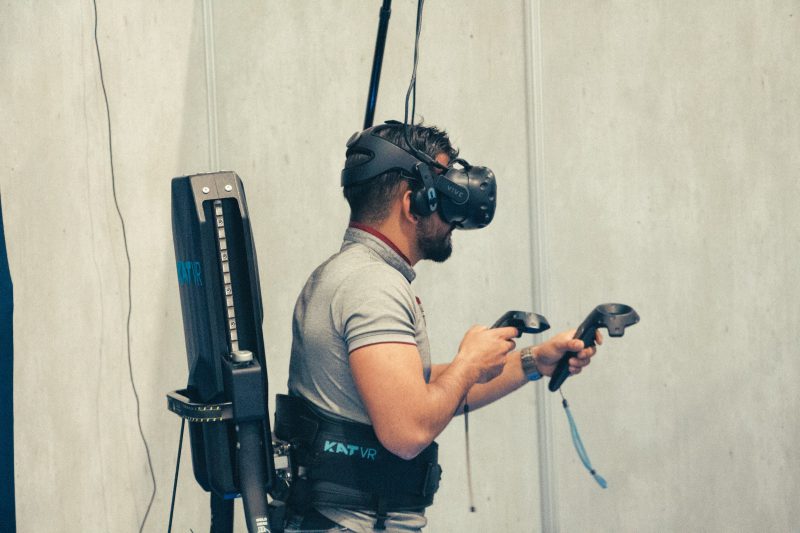The Metaverse: What is it? How can we make use of it?
This blog post was created as part of the interdisciplinary "zengaku zemi" seminar "Humanity and the Digital" offered at the University of Tokyo during the 2022-2023 academic year.
Author
FUJITA Masayuki
2nd Year Undergraduate Student, Humanities and Social Sciences III, College of Arts and Sciences Junior Division, The University of Tokyo
The metaverse. Does it sound exciting? Or perhaps you’re skeptical about it? Either way, I think most of us heard something about it when Facebook changed its name to Meta in 2021. In this blog post, I will begin by giving a definition of the metaverse. After that, I’m going to discuss some positive features of the metaverse. Finally, I’m going to show that these features might lead to negative results.
Although definitions of the metaverse vary, here are some common ones. According to Mystakidis (2022), the metaverse is a post-reality universe: a perpetual and persistent multi-user environment merging physical reality with digital virtuality. In the metaverse, VR goggles are often used so users can feel as if they are actually in the digital world.
When one hears about the metaverse, it's natural to ask: what is the difference between the metaverse and the internet? One major difference between them lies in their purpose (Unblend with Nicky, 2021). Although interactions are not always required on the internet, digital human interaction is the foundation of the metaverse. In the metaverse, people share a virtual universe together – at work, school, and in pursuing hobbies.
In addition, we can note two additional features of the metaverse. One is that the metaverse is an immersive place. Lee et al. (2021) claim that the core idea of the metaverse is an immersive internet offering a unified, persistent, and shared place. You can feel as if you are really in the situation you see through your VR goggles.
A second key feature is that virtual places built in the metaverse can be decentralized. Some people expect the metaverse to be a decentralized world. For example, there is a virtual platform called Decentraland. According to its official website, it is a virtual world owned by users. Within the platform, users can create, experience, and monetize their content and applications. You can play games, attend music festivals, and can do many other things in the metaverse (Decentraland, n.d.).
The technological innovations represented by the metaverse can affect our society and our well-being. I want to discuss here two areas of significance: virtual communities and mental health.
The metaverse allows for virtual communities and for us to interact with people living in any part of the world. We can construct workplaces in the metaverse. For instance, Microsoft has announced they will launch Microsoft Mesh, where Microsoft employees will be in a virtual office in the metaverse in which they can collaborate with each other regardless of their physical locations (Qian & Walker, 2022).
As well, we will be able to create communities dedicated to common hobbies, not only workplaces. A recent example of this was “Astronomical,” a Travis Scott concert that was part of a music festival held in a virtual space in the online video game Fortnite. It was a short event, but according to Epic (the company that owns Fortnite), over 12 million people tuned in for the event (Thier 2020). Many people are interested in virtual communities and there is significant economic potential here as well, as these communities can also function as marketplaces.
In addition, in the metaverse, specially designed VR tools can help people recover from their mental health issues. VRET (virtual reality exposure therapy) can help people suffering from phobias. VRET is based on “exposure therapy”, a traditional countermeasure to mental disorders like phobias. In such therapy, people experience a simulation of a situation that they are afraid of and overcome their fear by learning incrementally that they can actually cope with the situation (Hashimoto, 2019). VRET is a virtual version of this type of therapy.
In clinical trials of VR for mental health, such therapeutic interventions were proven successful for treating people with agoraphobia, for instance. Such individuals tend to avoid leaving their home, disrupting relationships with others. However, using VERT, they can get used to outside situations that they are afraid of virtually, while still at home. The advantage of this method is not only the replication of real situations but also that many people can enjoy the treatment, since it’s automated and doesn’t require real therapists whose number is often too small to meet patient demand (University of Oxford, 2022).
A study revealed that VRET was also effective in treating PTSD (Deng et al., 2019) as well as other phobias. So, if you had a car accident and got PTSD, you might be able to reduce the symptoms of it by virtual simulations. Two key advantages of VR are controllability and flexibility (Bottela et al., 2017). In research conducted by Cristina Botella et al. (2017), it was found that virtual worlds provide great possibilities that can even surpass reality in key respects, all while guaranteeing the user remains in a safe virtual environment.
We have discussed some of the important ways that the metaverse and VR can be useful in addressing mental issues. However, let us now turn to concerns about the metaverse. Ironically, they stem from the very advantages I have previously outlined.
Although we may enjoy staying in virtual communities in the metaverse, this can also lead to a lack of empathy. This is a problem raised by Sherry Turkle (2022), a psychologist and professor at MIT. She has pointed out that people tend to choose a community in the metaverse where they agree with everyone around them. She says by doing this we don’t have to develop the habits of dealing with a diverse community and dealing with friction, because we can easily run away from places where we don’t feel we easily fit in. Moreover, she is worried that we will lose the capacity for empathy in the end.
Turkle’s argument is persuasive. If we can do many things that involve human interaction in the virtual communities where there are only those who are alike in terms of personality, ethnicity, social status, and preference for political opinions, there might be polarization and the creation of greater disconnection between groups. And that can lead to difficulty in compromising with each other in the real, messy non-digital world. In this way, problems originating in the virtual world of the metaverse can spread to the real or physical world.
In addition, the use of VRET for the reduction of PTSD symptoms could also potentially become a source of the very mental issue it is meant to alleviate. Imagine you are playing a battle video game with your friends in the metaverse. You can be so immersed in the virtual world that the sight of your friend’s avatar being killed can provoke PTSD. Or, if you are in a metaverse game and see your friend’s avatar killed in a car accident, you might suffer from PTSD afterward. If the metaverse can be truly engrossing, then it can be truly harmful and not merely a “virtual” experience. PTSD can happen not only to the victims of a traumatic event but also to its witnesses, so being at the shocking scene can harm you. We may confuse virtual reality with physical reality, experiencing incidents that occur in the metaverse as something real. The virtual immersion which is one of the key selling points of the metaverse may harm us. We might suffer in the real world because of stressful events which happened in the metaverse.
We see that these two problems have something in common: they have clear implications beyond the metaverse. Our life in the non-digital world will be affected.
 Photo by Stéphane Bernard https://unsplash.com/ja/%E5%86%99%E7%9C%9F/Ozz3tk1Jz4I
Photo by Stéphane Bernard https://unsplash.com/ja/%E5%86%99%E7%9C%9F/Ozz3tk1Jz4I
Solving these problems might seem impossible. After all, it seems inevitable that people will choose to be in a comfortable community in the metaverse. Who wants to be in a place where there are people you cannot get along with?
It might help if we could provide students with opportunities to interact with each other, including by having discussions on controversial topics. School is often where many people from different backgrounds come together, so it is a good place to nurture empathy and skills for discussion. Without this kind of education, students might lack empathy and have difficulties in their future workplaces or when they become parents.
We might attempt to completely transfer communities (including schools, workplaces, and hobby groups) to the metaverse. But a more basic question arises: is this goal fully realistic or desirable? Even if it was technologically feasible, would we really want to spend all day in the metaverse, with our bodies left in the physical world? Can we live a happy life without interacting with people in the physical world? If one’s answer is “No”, then the metaverse would no longer appear as such a complete solution to many human challenges.
It’s natural to think that we need regulations to prevent potentially harmful and traumatizing content in the metaverse. However, this might be difficult, since the metaverse can be constructed in a decentralized way, where private individuals have their own virtual real estate. As a possible solution, we might look to AI and algorithms to monitor what happens in the metaverse and to report and exclude harmful events, as is to some extent the case on social media platforms today. However, allowing the government, or corporations that provide these platforms, to monitor our lives in the virtual world can lead to privacy problems.
In conclusion, while there are already virtual worlds for different purposes such as work, education, hobbies, and psychological treatment, they have yet to be combined with each other to compose one metaverse world. If in the future we come to spend much more time in the metaverse and we can thereby easily choose and change which community we are in, we might give up trying to understand those who are different from ourselves in terms of moral and political opinions, socio-economic status, or ethnicity. In addition, since anyone can, in principle, create deeply immersive content in the metaverse, we might encounter shocking or harmful content that can lead to mental health issues.
The negative side of the metaverse will have an impact on our lives in the physical world, not only on our digital avatars. Before the metaverse is fully developed to be a major part of our lives, it is essential to figure out how to properly address problems such as the risk of a general loss of empathy, or harm due to encountering shocking events.
References
Botella, C., Fernández-Álvarez, J., Guillén, V., García-Palacios, A., & Baños, R. (2017). Recent progress in virtual reality exposure therapy for phobias: a systematic review. Current psychiatry reports, 19(7), 1-13.
Decentraland. (n.d) Welcome To Decentraland https://decentraland.org/ Accessed 11 October, 2022.
Deng, W., Hu, D., Xu, S., Liu, X., Zhao, J., Chen, Q., ... & Li, X. (2019). The efficacy of virtual reality exposure therapy for PTSD symptoms: A systematic review and meta-analysis. Journal of affective disorders, 257, 698-709.
Hashimoto, K. (2019) [Fundamentals of Clinical Psychology for Professionals] Senmonshoku no tame no rinshoushinrigaku kiso (in Japanese). Muisuri Shuppan.
Lee, L. H., Braud, T., Zhou, P., Wang, L., Xu, D., Lin, Z., ... & Hui, P. (2021). All one needs to know about metaverse: A complete survey on technological singularity, virtual ecosystem, and research agenda. arXiv preprint arXiv:2110.05352.
Mills, I. K. and Turkle, S. (Hosts). (2022, May 4). Is technology killing empathy? With Sherry Turkle, PhD (No. 189) [Audio podcast episode]. In Speaking of Psychology. The American Psychological Association. https://www.apa.org/news/podcasts/speaking-of-psychology Accessed 11 October, 2022.
Mystakidis, S. (2022). Metaverse. Encyclopedia, 2(1), 486-497.
Qian, W. & Walker, S. (2022, April 28) Microsoft Mesh(preview) overview. Microsoft https://docs.microsoft.com/en-us/mesh/overview Accessed 11 October, 2022.
Thier, D. (2020, April 28) A Staggering Number Of People Saw Fortnite’s Travis Scott ‘Astronomical’ Event.Forbes.https://www.forbes.com/sites/davidthier/2020/04/28/a-staggering-number-of-people-saw-fortnites-travis-scott-astronomical-event/?sh=5e5b1fc7b41f Accessed 11 October, 2022.
Unblend with Nicky. (2021, December 7).The Difference Between the Metaverse and the Internet. Medium.com.https://medium.com/codex/the-difference-between-the-metaverse-and-the-internet-d8c02966ad2b Accessed 11 October, 2022.
University of Oxford. (2022, April 5). Breakthrough success in provision of automated psychological therapy using virtual reality. University of Oxford. https://www.ox.ac.uk/news/2022-04-05-breakthrough-success-provision-automated-psychological-therapy-using-virtual-reality Accessed 11 October, 2022.








